July 6, 2020 feature
Researchers develop soft electromagnetic actuators with medical potential
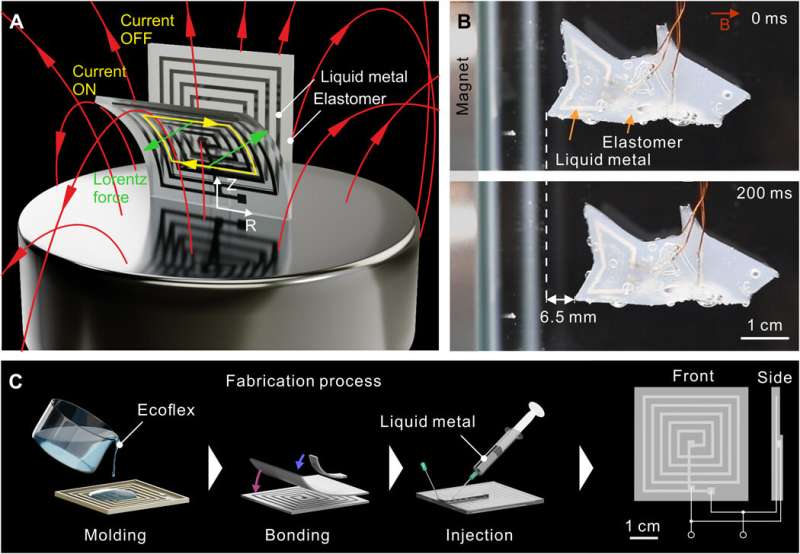
Rigid electromagnetic actuators have a variety of applications, but their bulky nature limits human-actuator integration or machine-human collaborations. In a new report on Science Advances, Guoyong Mao and a team of scientists in soft matter physics and soft materials at the Johannes Kepler University Linz, Austria, introduced soft electromagnetic actuators (SEMAs) to replace solid metal coils with liquid-metal channels embedded in elastomeric shells. The scientists demonstrated the user-friendly, simple and stretchable construct with fast and durable programmability.
They engineered a SEMA based soft miniature shark and a multi-coil flower with individually controlled petals, as well as a cubic SEMA to perform arbitrary motion sequences. The team adapted a numerical model to support device miniaturization and reduce power consumption with increased mechanical efficiency. The SEMAs are electrically controlled shape-memory systems with applications to empower soft grippers for minimally invasive medical applications. The scientists highlighted the practicality of small size and multi-coil SEMAs for promising applications in medicine, much like in the classic sci-fi movie "Fantastic Voyage," in which a miniature submarine destroyed a blood clot to save a patient's life. In reality, Mao et al. aim to develop and deploy SEMA-based advanced microrobots for such futuristic medical applications, including drug delivery and tissue diagnostics with nano-precision.
Robots and their applications
Robots are actively introduced into a variety of technical fields ranging from industrial production to autonomous transport, public security, and as personal assistants in medicine—in close contact with humans. The use of robots to perform surgery via guided magnetic resonance imaging (MRI) is gaining attention, and future applications will seek to advance safe robot-human interactions.
Since Michael Faraday's demonstrations of the rudimentary electric motor in 1821, electromagnetic motors that form the core of conventional robots have undergone numerous changes. The interplay of rigid materials such as copper or iron used for such devices can be harmful for collaborations with the human body, imposing a major drawback to the development of new and soft functional actuators that are sensitive to a variety of triggers, including heat, humidity, pH, light and electric or magnetic fields. Furthermore, soft, functional actuators are limited by slow response times and difficulty in precise control during real-life applications. It is therefore more practical to reform the structure and materials to engineer soft electromagnetic actuators (SEMAs).
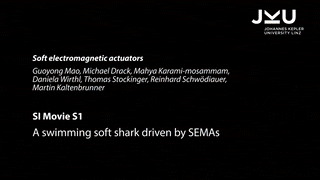
Designing and developing high-performance soft electromagnetic actuators (SEMAs)
In this work, Mao et al. presented several methods to design and develop high performance soft electromagnetic actuators to power soft forms of robotics. They explored six main design strategies, where the new class of SEMAs replaced hard, rigid structures of conventional direct current (DC) motors with liquid-metal channels embedded in a soft elastomer shell. In its working principle, when a current is sourced through the conductive channel, a single-coil square SEMA will bend, allowing it to act as a motor for soft robotics. They used a driving voltage below 1 V, which was harmless, and even allowed underwater functions; the scientists demonstrated the concept with a swimming shark made of SEMA-based fins and a tail. Mao et al. modeled the SEMAs as a series of conductive wires in a magnetic field and calculated the driving force according to the Lorentz force law, and examined the distribution of the magnetic field to design and actuate SEMAs.
In this work, the team used a plate magnet and characterized the quantitative magnetic field via experiments and simulations. The results showed the need for low electrical resistance to operate the SEMA, which Mao et al. achieved by using liquid metals as the stretchable conductor in the construct. They incorporated molding as a frugal approach to achieve precisely patterned elastomers and well-sealed liquid-metal channels.
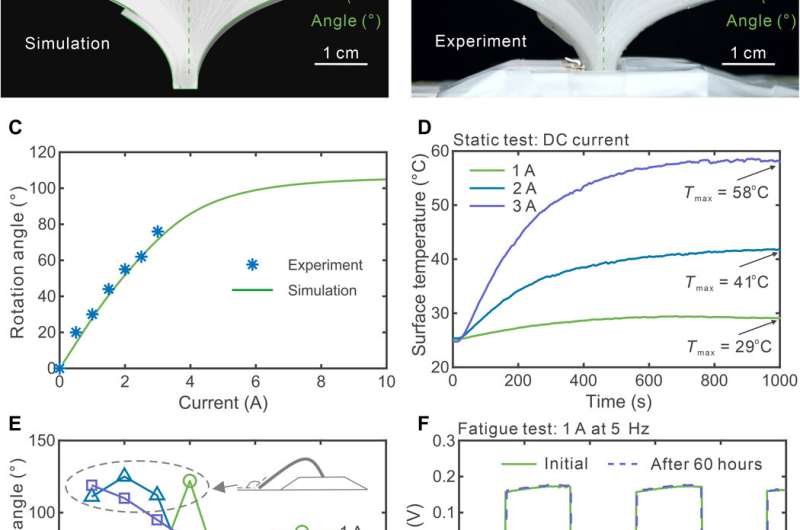
Optimizing SEMAs for improved performance and proof-of-concept applications
By increasing the magnetic field in the experiment, the scientists increased the strain energy of actuation of the construct. They could also increase the strain energy of SEMAs by increasing the amplitude of the current, although joule heating effects could increase heat and temperature in the set up. The team achieved a decreased resistance of the SEMA by adding conductive particles like copper for improved performance of the device. Mao et al. then conducted a series of actuation frequency tests to investigate the performance of SEMAs. They used prolonged fatigue tests (actuation at 5 Hz frequency for 60 hours) and showed how a single-coil square SEMA could be bent 2.16 million times without any changes in performance. The scientists then miniaturized SEMAs via a diverse array of techniques.
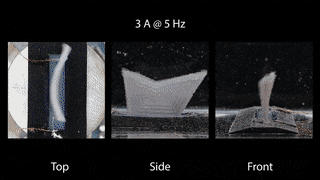
To further determine the power of SEMAs, the team built a double-coil square to provide a higher force beyond a single-coil version. The maximum output power of SEMA was about 57 mW, while the maximum power density reached 5.3 mW/g. With time, the efficiency decreased as the current increased, while most of the power dissipated as heat to the environment. After optimization, the team noted the remarkable flexibility of SEMAs, compared to other types of soft functional actuators. As proof-of-concept, they developed several constructs including a fish-tail SEMA in the form of a blender and a flower SEMA with five petals. The multi-coil flower SEMA demonstrated high programmability with each petal acting as a single petal to function in arbitrary magnetic fields.
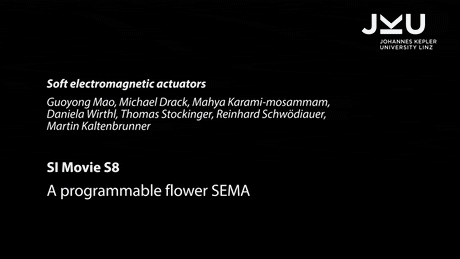
In this way, Guoyong Mao and colleagues introduced a series of SEMAs for highly controlled fast actuation, where their soft-body and low driving voltage did not interfere when in contact with living organisms and fragile objects. The experiments and theoretical analyses predicted SEMAs to maintain high energy density, power density and efficiency, when subject to a strong magnetic field. The SEMAs were efficiently controlled and easily programmed, allowing individual actuation of soft robotic elements in complex actuators as demonstrated with a flower SEMA. Further numerical and experimental analyses allowed the team to improve the power output and mechanical efficiency of the constructs. The new work will have extended applications in precision drug delivery, tissue diagnosis and cell manipulation.
More information: Guoyong Mao et al. Soft electromagnetic actuators, Science Advances (2020). DOI: 10.1126/sciadv.abc0251
Sheath-run Artificial Muscles. Science DOI: 10.1126/science.aaw2403
Hiroki Arazoe et al. An autonomous actuator driven by fluctuations in ambient humidity, Nature Materials (2016). DOI: 10.1038/nmat4693
© 2020 Science X Network


















